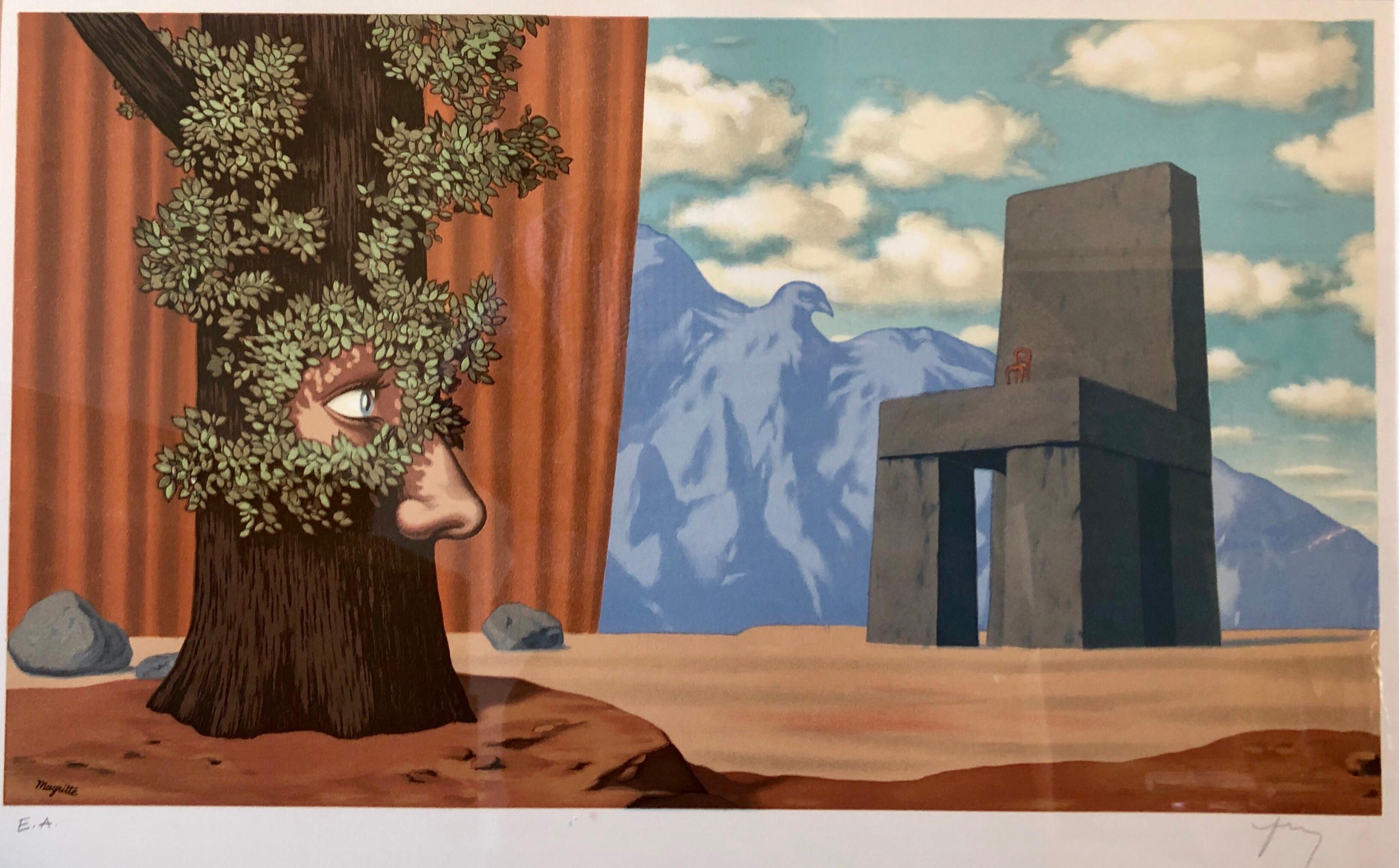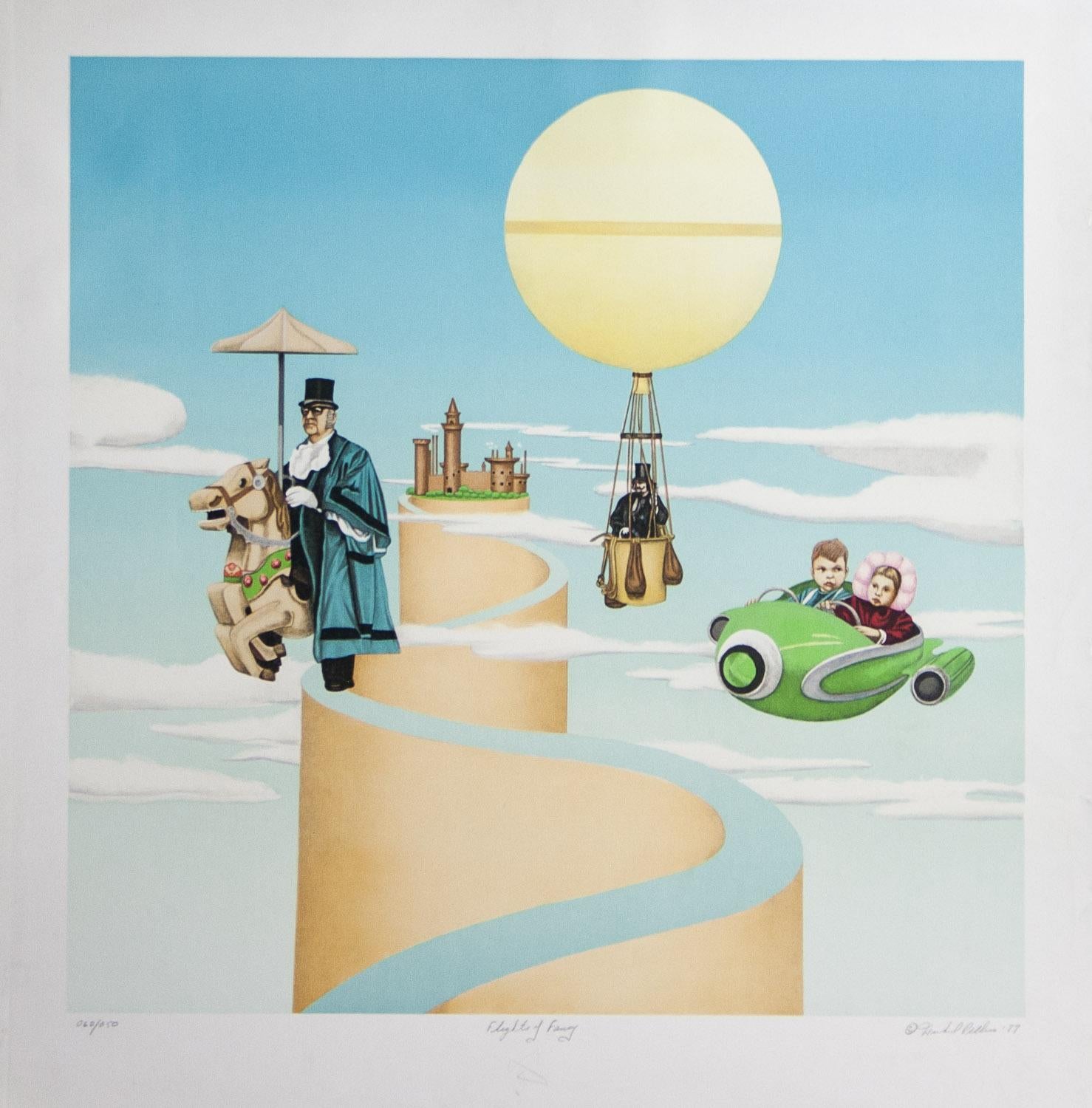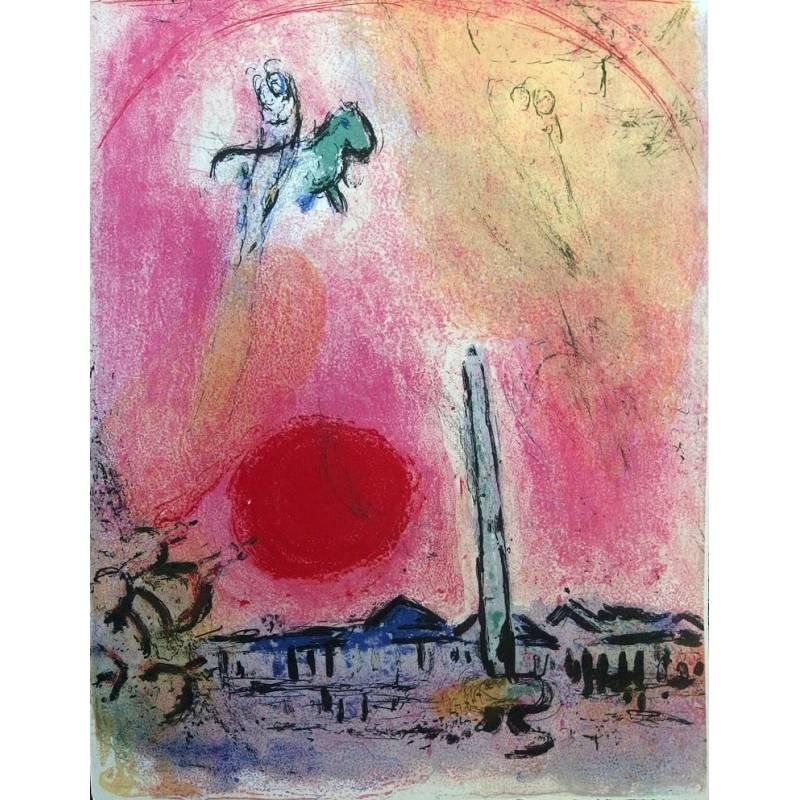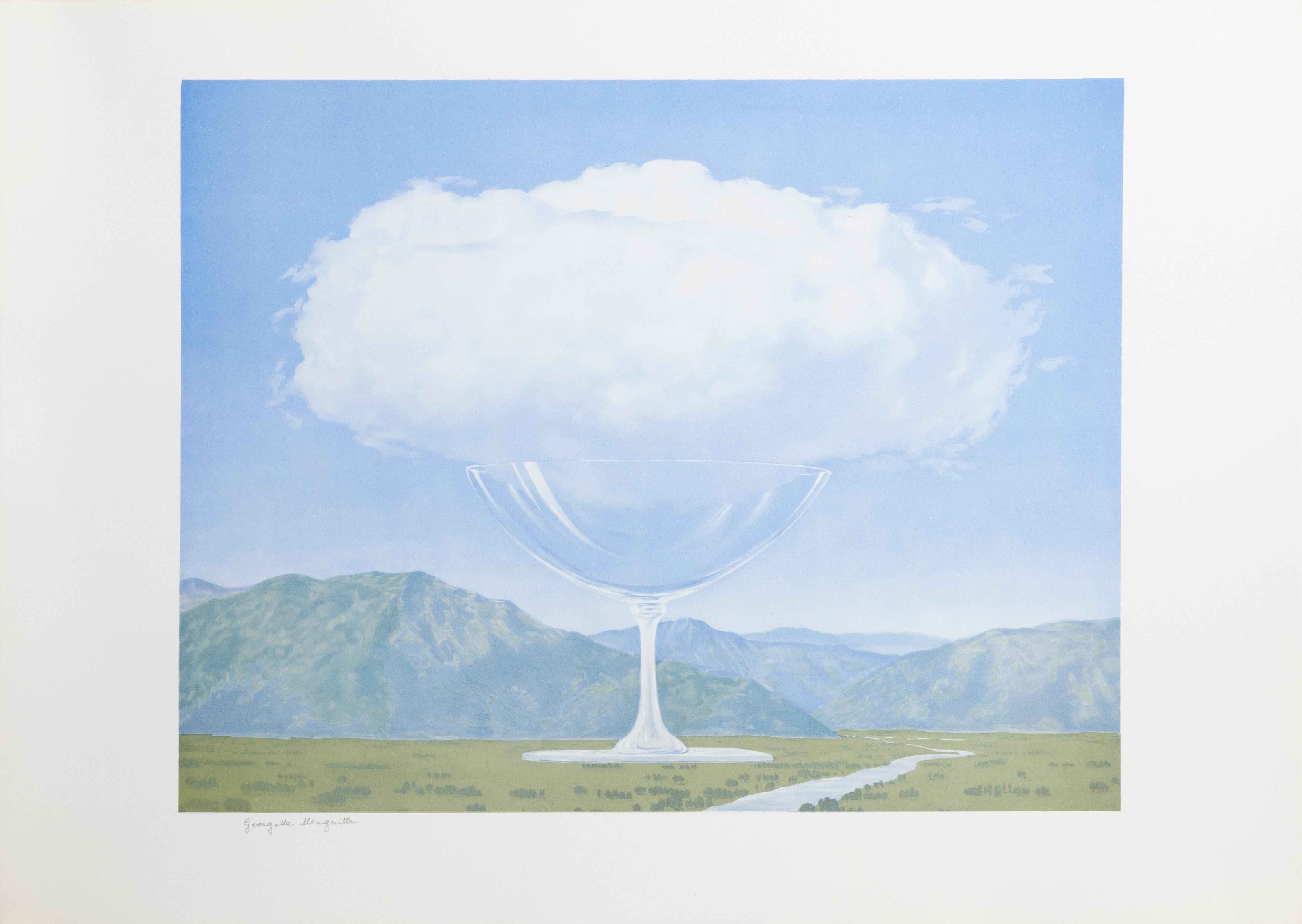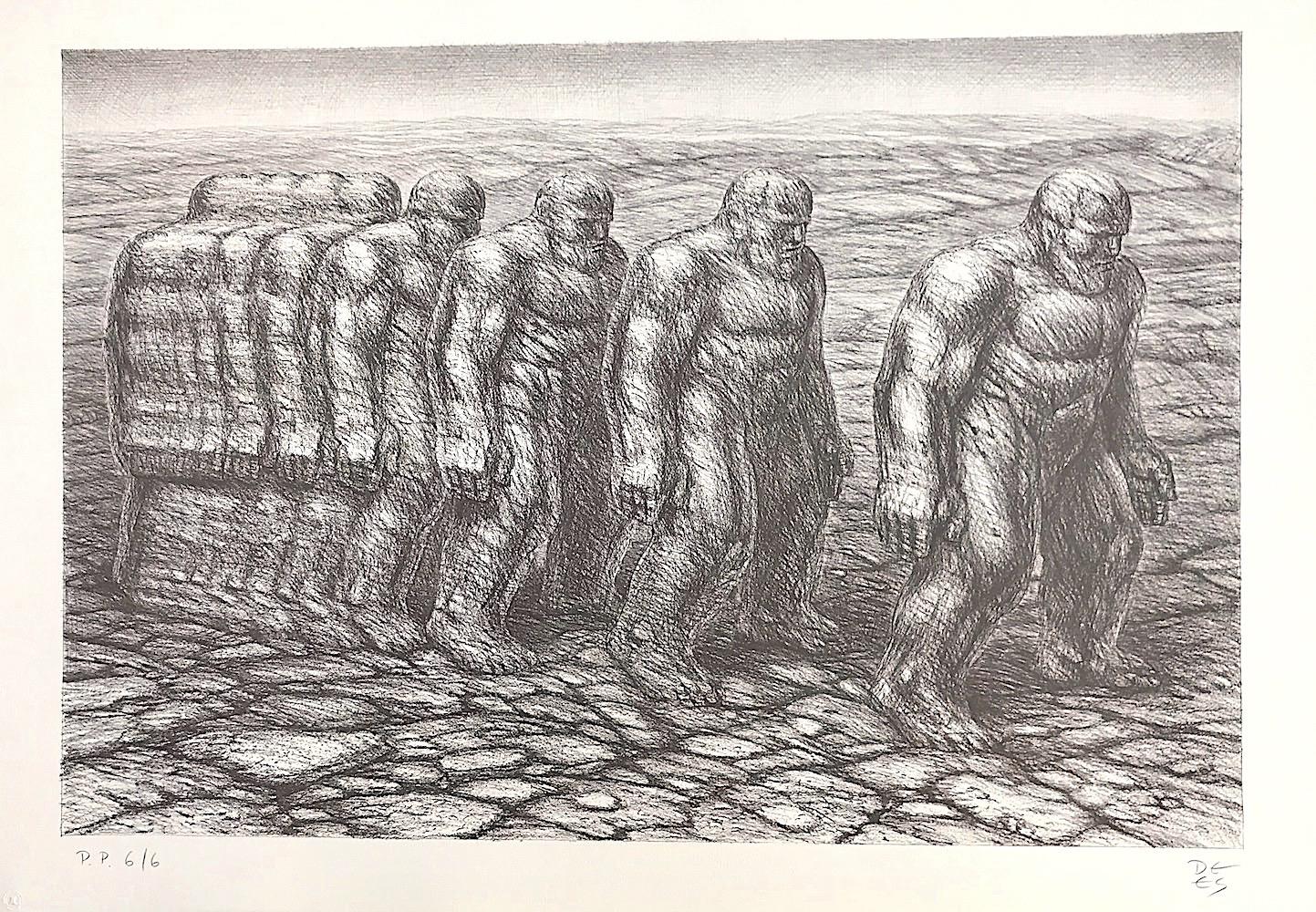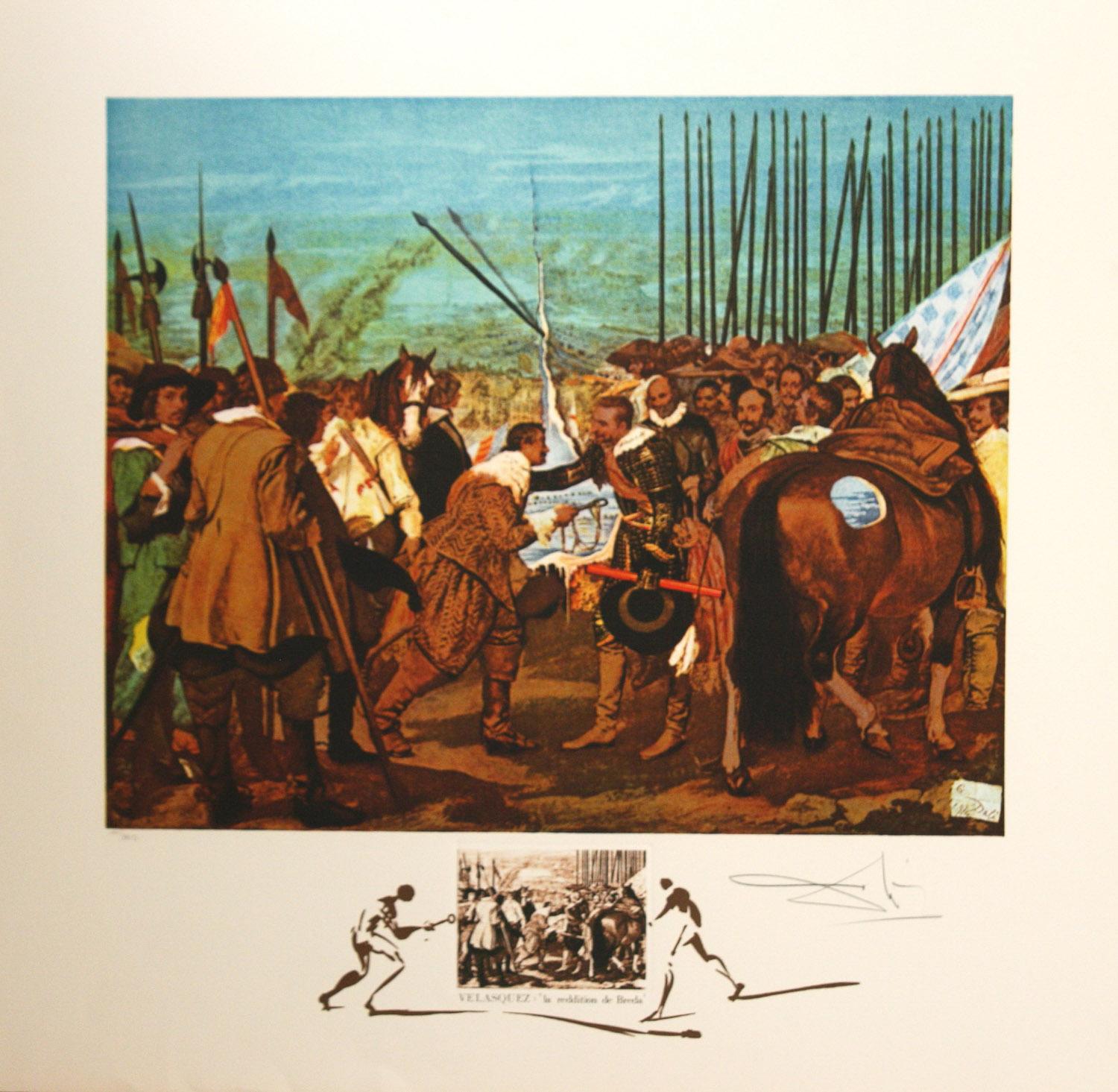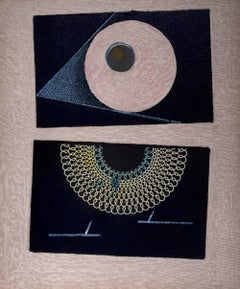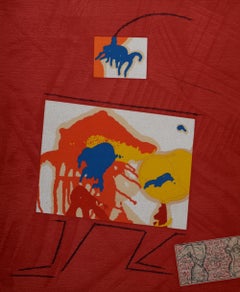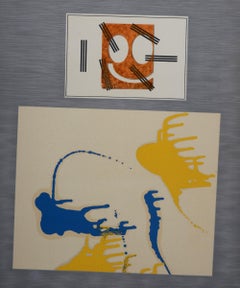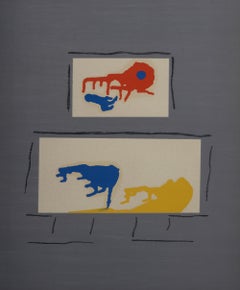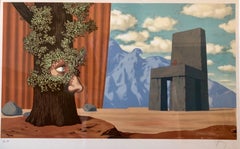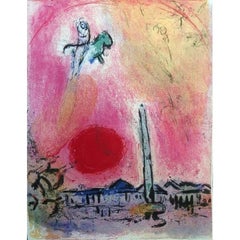Lithograph in colors on vélin Fabriano charta ex meris pannis "ab alveo" manu fabricata, perlucidis figuris intexta paper. Paper size: 19 x 13.75 inches. Inscription: Signed in the plate and unnumbered, as issued. Catalogue Raisonne Reference: Michler/Löpsinger 1600; Field 69-3. Notes: From the album, VI tavole dal ciclo della, Biblia Sacra, 1967. Published by Rizzoli-Mediolani, Milan, and Giuseppe Albaretto, Port Lligat; printed by Graphic Workshop of Rizzoli-Mediolani, Milan, October 21, 1967. Excerpted from the volume (translated from Italian and Latin), These tables belong to the cycle of 105 works expressly executed by Salvador Dalí, for the edition of the "Holy Bible". Nothing prevents it from being printed Milan, 21st October 1967. Sac. Henricus Galbiati, cens. cccl. Printed in the Arch. Court of Milan, 23rd October 1967. +Theresius Ferraroni. All rights reserved. Rizzoli publisher - 25th November 1967. Here, then, is the edition of the Holy Bible, which perhaps presents the highest example of the exceptional art of bookbinding for our time. From the perennial text, which a proven and chosen group of experts, namely bibliographers, scholars, technicians, and artists, has meticulously edited, and also from a large bookshop equipped to the most recent art style, a work of art now arises, finished with infinite care and, as it were, constructed through each individual copy, with the wisdom of artists that the ages have commended. Dressed in this garment, which surpasses the limits of any time with its solemnity and severity, a vast complex or perspective of images is inserted, which attests to one and the same excellent way of reading, interpreting, representing, conceiving and depicting the Holy Bible, God and man: namely, a series of L wonderful paintings by Salvador Dali, who is the greatest example of modern art, whose taste for symbolism, his unique talent, and his vivid style of painting are everywhere noticeable. In these L works of art, you, the op-time reader and spectator, will be able to contemplate magnificently configured a diligent and, as it were, anxious impulse, brimming with symbols and arcane meanings, which seems to denote the reason and relationship between modern man and the true God of any time. Milan, November 10, 1967. The six tables presented in this folder belong to the cycle of 105 specially executed by Salvador Dali for illustration and interpretation of the Sacred Bible, which constitutes the most recent and vast pictorial enterprise of the brilliant Catalan master. Overcoming the lucidly surrealist expression that is more customary in his work and making use of the visionary experiences of which his spirit has always been nourished, as well as the staggering technical ability also served by a particularly acute sensitivity for matter, Dali arrives in these tables at an extraordinarily rich language, of a freedom and breadth of breath to epic moments, in a pregnancy and looseness of fluid and ductile color of a mobility and plurality of accents to be traced back to the best baroque vein that has so much part in his imagination. Such a wealth of unprecedented connotations placed by the artist in the service of his visual commentary on the sacred text, could not but involve, in terms of graphic reproduction, an equally severe technical commitment, such as to achieve the result of the most valuable craftsmanship, both because it is conditioned by the high lyrical level of Dali's originals, and by the finesse and vastness of the means used in order to obtain maximum reproduction fidelity. In order to achieve such an exceptional result — of which the six tables presented here offer excellent testimony - after all a series of tests and experiments, all possible modern and ancient techniques have been used. On the special cardboard, specially manufactured to receive the many color impressions, superimposed on each other, the different techniques coexist, the most refined and subtle: to return intact, in its dazzling richness, the material sumptuousness of the chromatic language that Salvador Dali "invented" under the inspiration of the "Book of Books". With the editor's singular and personal direction and moderation, this work, divided into five volumes, was brought to fruition entirely and solely in the Officina Graphica Rizzoli, Mediolani, under the supervision of Pietro Raggi and with the assistance of Pietro Volonté and Ioanne Carlo Penna. The form of the letters, derived from some incunabula of Aldus Manuti, was newly outlined and cast for this very purpose. The following were ordered for printing: XCIX examples "for personal use", each with an original plate by Salvador Dali, on which they were printed on paper made by hand from mere cloth "from the river", woven with translucent figures, and covered and compacted in a greenish hue, which is commonly called "maro-chino", decorated with golden ornaments and painted on the back like a mosaic work. CXCIX examples, sumptuous edition "magni luxus", distinct Roman numerals from I to CXCIX, equally printed on paper made from pure cloth "from the river" by hand, inlaid with transparent figures, and covered with green leather with golden ornaments, painted on the back like a mosaic work. MCDXCIX examples, beautiful edition "luxus", distinct Arabic numerals from I to MCDXCIX, printed on paper with special verdigris and inlaid with transparent figures, covered with leather showing the color of leather, with golden ornaments.
SALVADOR DALI (1904-1989) Salvador Dali's work is associated with the surrealist movement of the 20th Century. A diverse and multi-talented artist, Dali is considered one of the most collected artists today, and his works offer an incredible opportunity for enormous appreciation in value. In addition to his original works, Dali produced works on paper for reproduction using dry point, etching, woodcut, and lithography. Many of his works are held in prestigious private and public collections world-wide.
